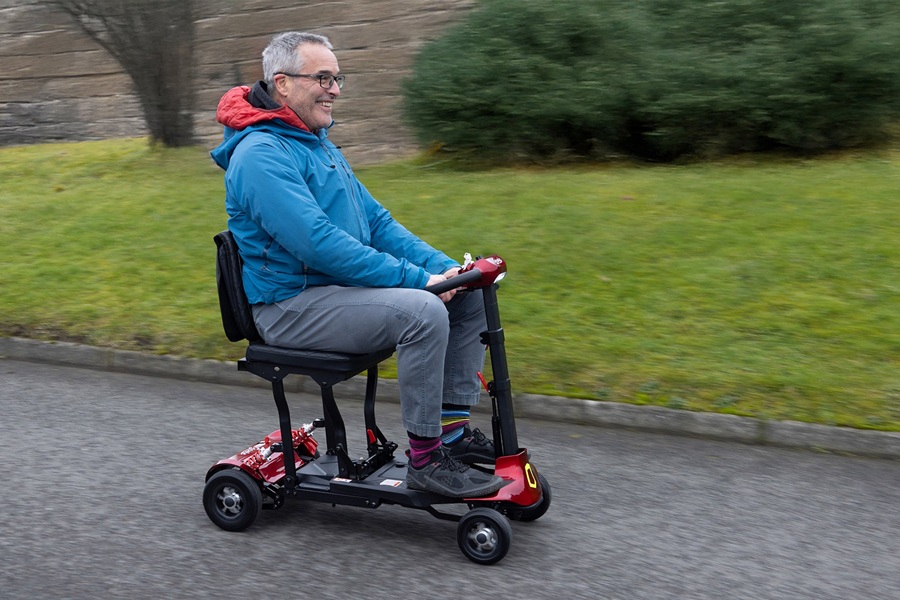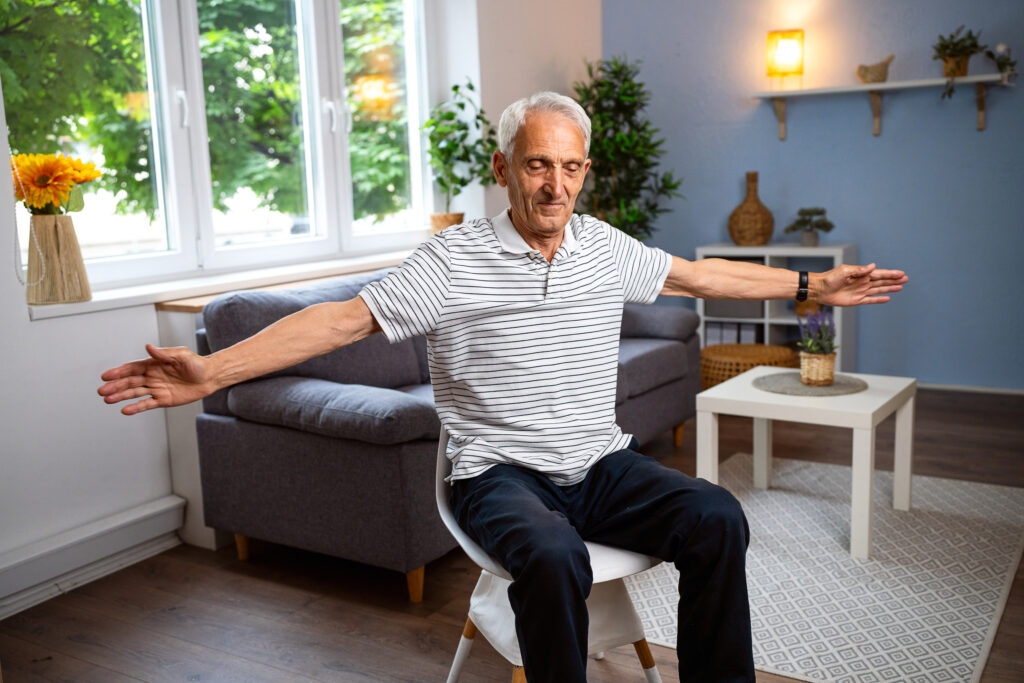
As we age, staying active can become more challenging due to decreased physical ability. However, maintaining an active lifestyle is essential for overall health and mobility.
Fortunately, taking part in seated workouts for seniors requires minimal preparation or equipment, making them an accessible and beneficial addition to any routine. Additionally, Monarch Mobility offers a range of solutions, including mobility scooters and wheelchairs, to support those with mobility challenges in staying independent and enjoying greater freedom.
Seated workouts, also known as sitting exercises or chair exercises, are simple and effective movements designed for individuals who find it more comfortable to exercise while seated. These exercises enhance flexibility, mobility, and overall wellbeing while being gentle on the joints.
Taking part in a chair workout for just a few minutes each day can improve strength, balance, posture, and overall mobility.
It offers a low-impact and effective way to maintain fitness without putting excessive strain on muscles or joints.
Seated exercises for the elderly are particularly beneficial for those who want to maintain or enhance their physical ability. Since healing and muscle regeneration slow with age, regular movement becomes crucial to maintaining strength, flexibility and mobility.
Chair workouts are also great for individuals recovering from surgery or illness, allowing the body to slowly strengthen and gain mobility.
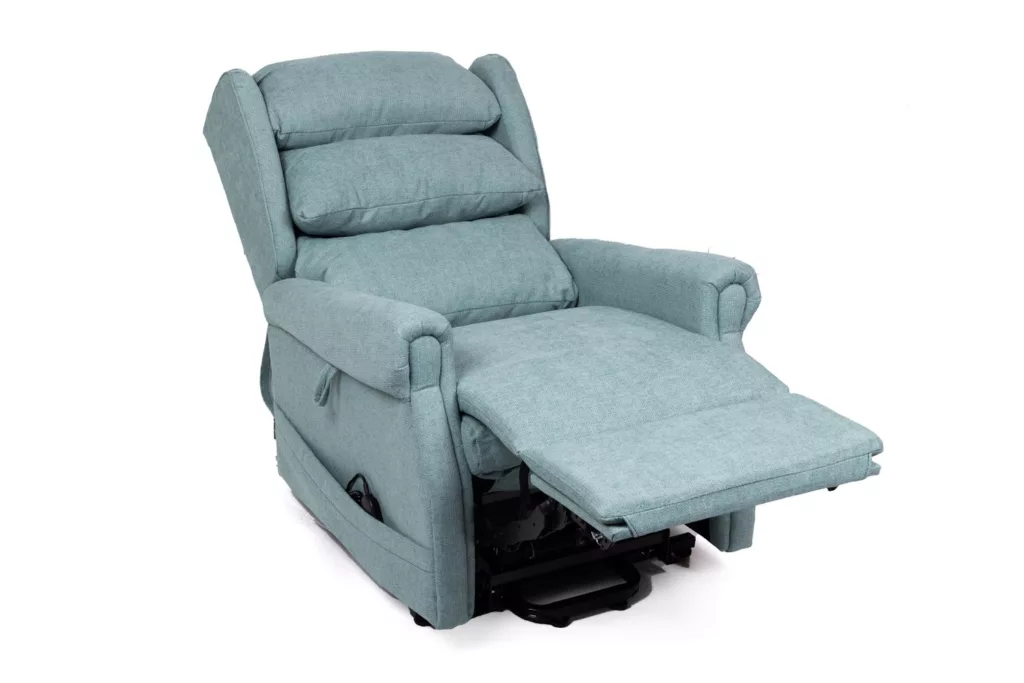
One of the great advantages of seated exercise for the elderly is that they can be done anywhere there is a chair!
You don’t need any special equipment, just a stable chair without wheels. You can practice exercises at home, in the garden, or at a local community centre. You can also learn the exercises from a printout, a video, or an instructor – whichever method you find best.
No matter how you incorporate the exercises, they can improve your mobility and help prevent falls, so are a beneficial addition to your daily routine.
No, you don’t need any prior fitness to start chair-based exercises for the elderly.
While exercising sometimes feels like it requires a lot of physical effort, seated exercises for seniors are low-impact yet still promote movement and strength.
Seated exercises for elderly individuals can be adapted to suit different fitness and mobility levels. You can modify movements, add weights for extra resistance, or stick to gentle motions – whatever works best for you and your body.
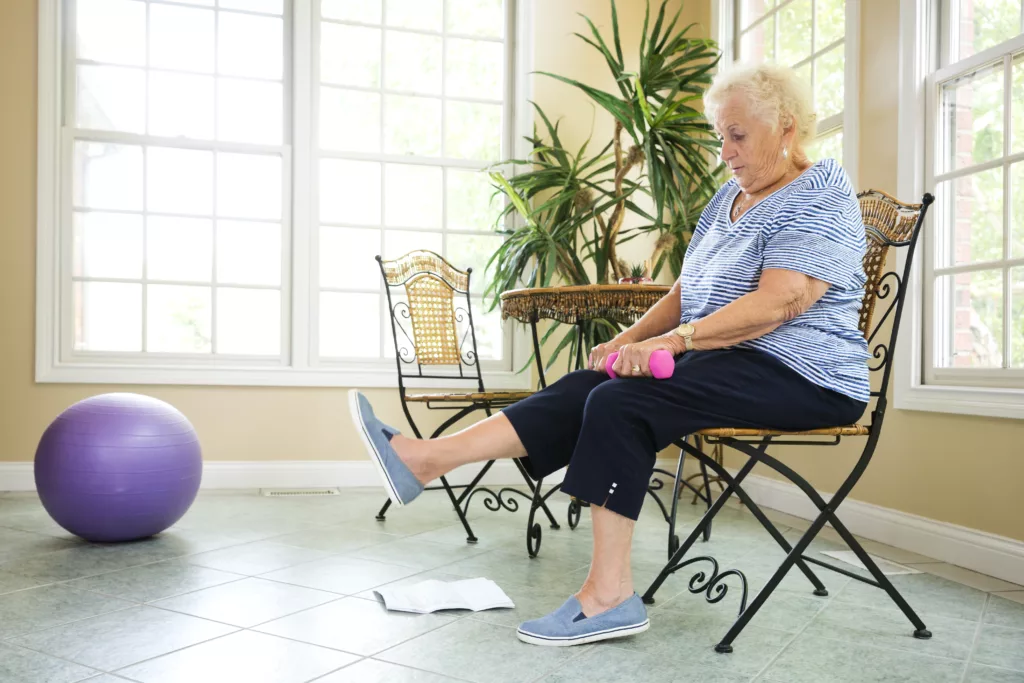
Whether you are looking to regain mobility, recover from an injury, or simply stay active, there are various seated workouts for seniors that you can do, which will focus on different parts of your body.
Seated exercises for the upper body help maintain muscle strength for daily activities like lifting groceries and dressing. They also promote bone health and flexibility, reducing the risk of falls and injuries.
Exercises for the elderly to strengthen legs can significantly enhance mobility, stability, and independence. Strong leg muscles support activities such as standing, walking, and climbing stairs while helping to maintain bone density and promoting better circulation.
Chair-based knee exercises can help strengthen surrounding muscles, improving balance, flexibility and stability. They also alleviate stiffness and joint pain during daily activities like walking, climbing stairs, and getting in and out of chairs, mobility scooters or wheelchairs.
Ankle exercises for the elderly help reduce joint stiffness and enhance circulation and overall foot mobility. They can significantly improve balance and stability, which is crucial for preventing falls.
Seated exercises for the torso aid in maintaining posture, balance, and core strength. A strong core helps prevent falls and makes everyday tasks, like getting up from a chair, easier.
If you are recovering from surgery or have a medical condition, consult your doctor before starting any new exercise routine.
By incorporating sitting exercises for seniors into your daily routine, you can improve strength, flexibility, and overall wellbeing – all from the comfort and safety of your chair!
Here are some excellent resources for seated workouts for seniors:
Seated workouts for seniors are a great way of keeping your body mobile, flexible and strong.
As we age, the right support can enhance our mobility and independence – whether that’s making your home accessible or finding the perfect mobility scooter, rise and recliner chair, walker, or wheelchair. Whatever your mobility needs, speak to our expert team to help you find the perfect solution for you.
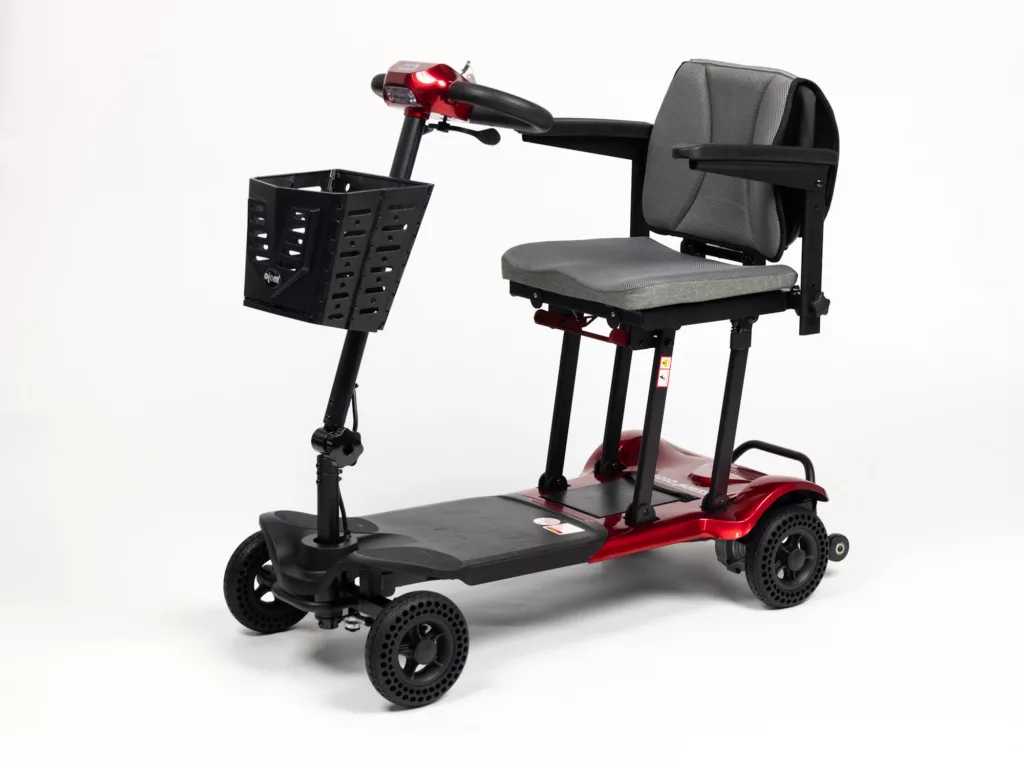
There is always a risk of injury when engaging in any physical activity. Choosing to participate in a chair workout should be done with caution and at your own risk.
Monarch Mobility accepts no liability for injuries sustained during any exercises undertaken.
Always consult a doctor before starting any new routine, particularly if you have recently undergone surgery, experience chronic pain, or have trouble maintaining proper posture.
Listen to your body and progress gradually. If you experience sharp pain, dizziness, nausea, or trouble breathing, stop the exercise immediately and consult a medical professional.
